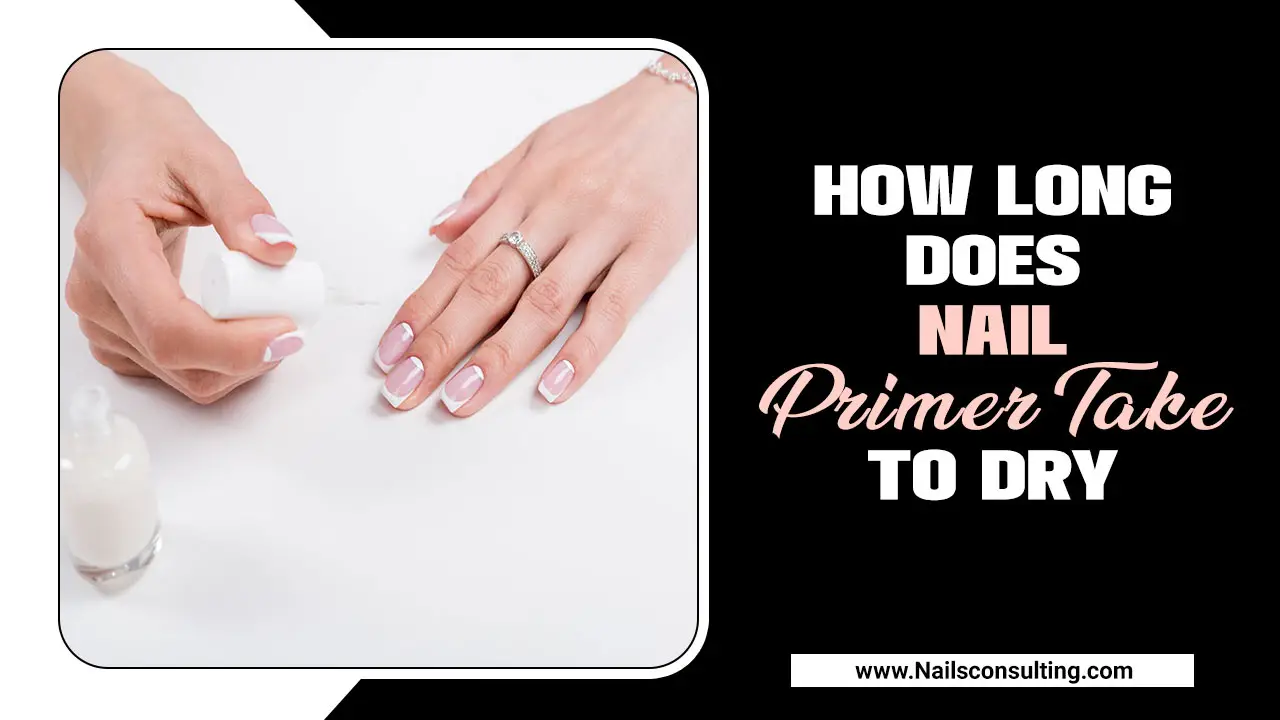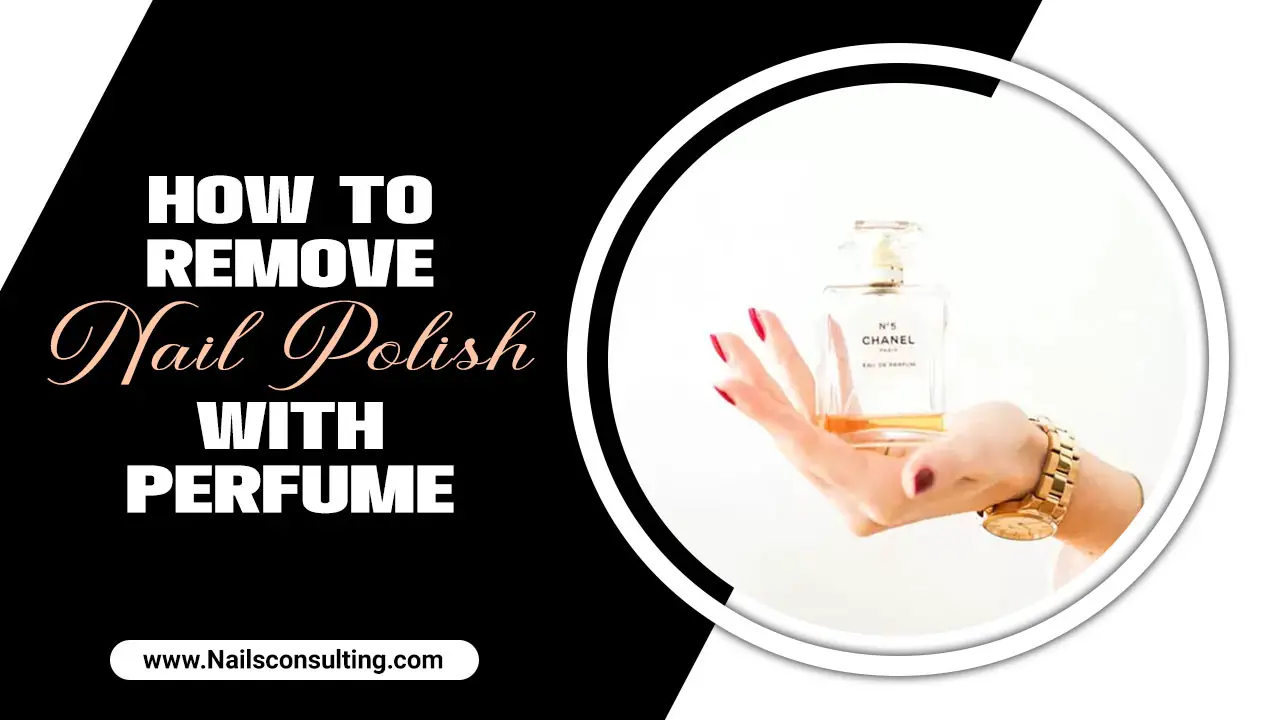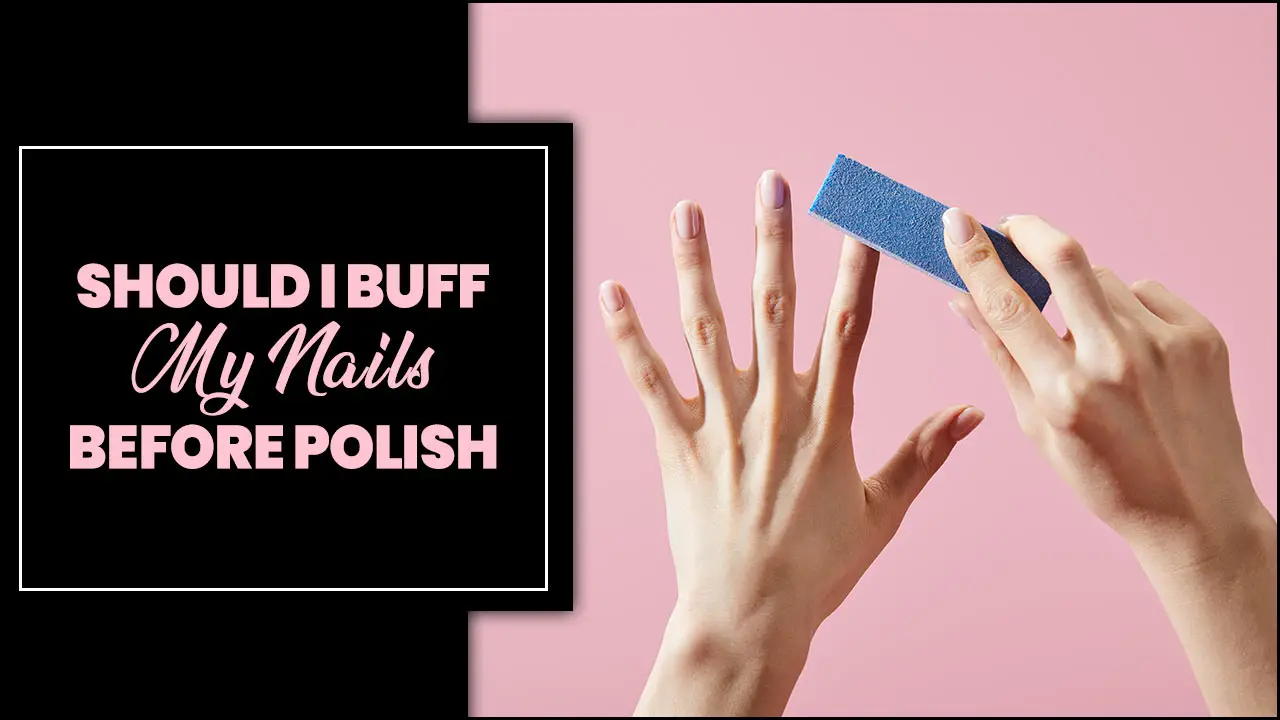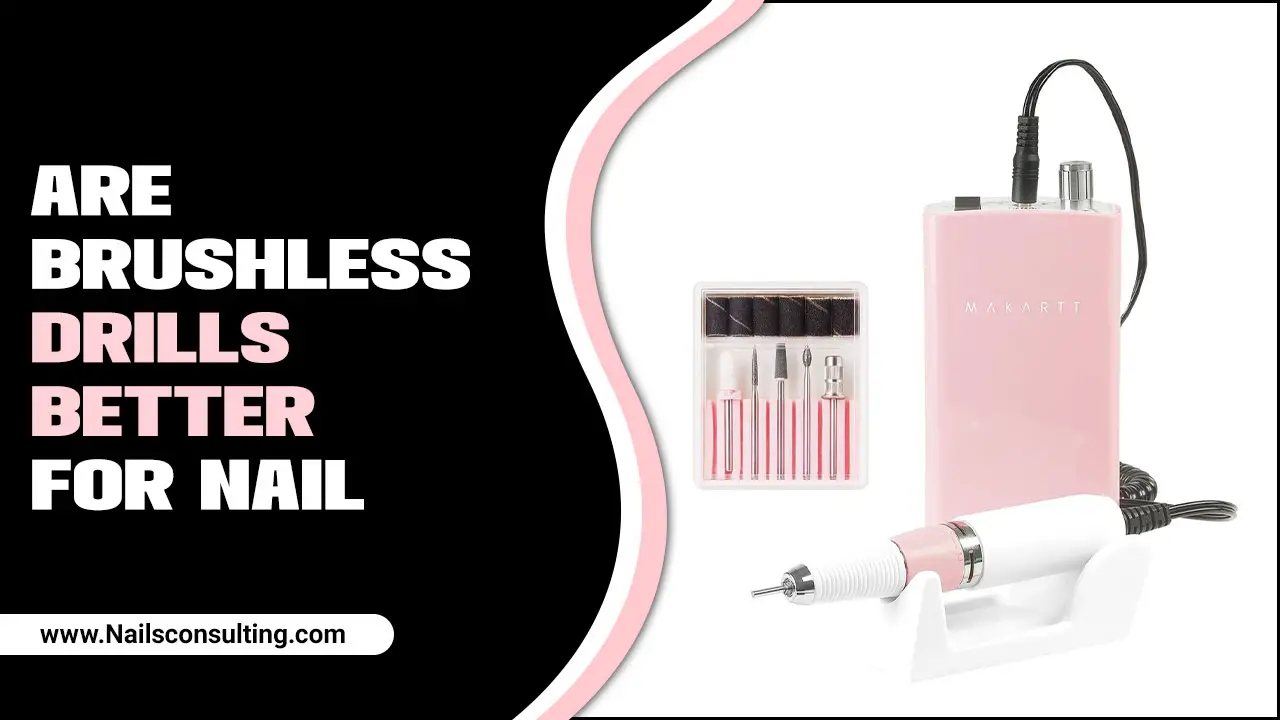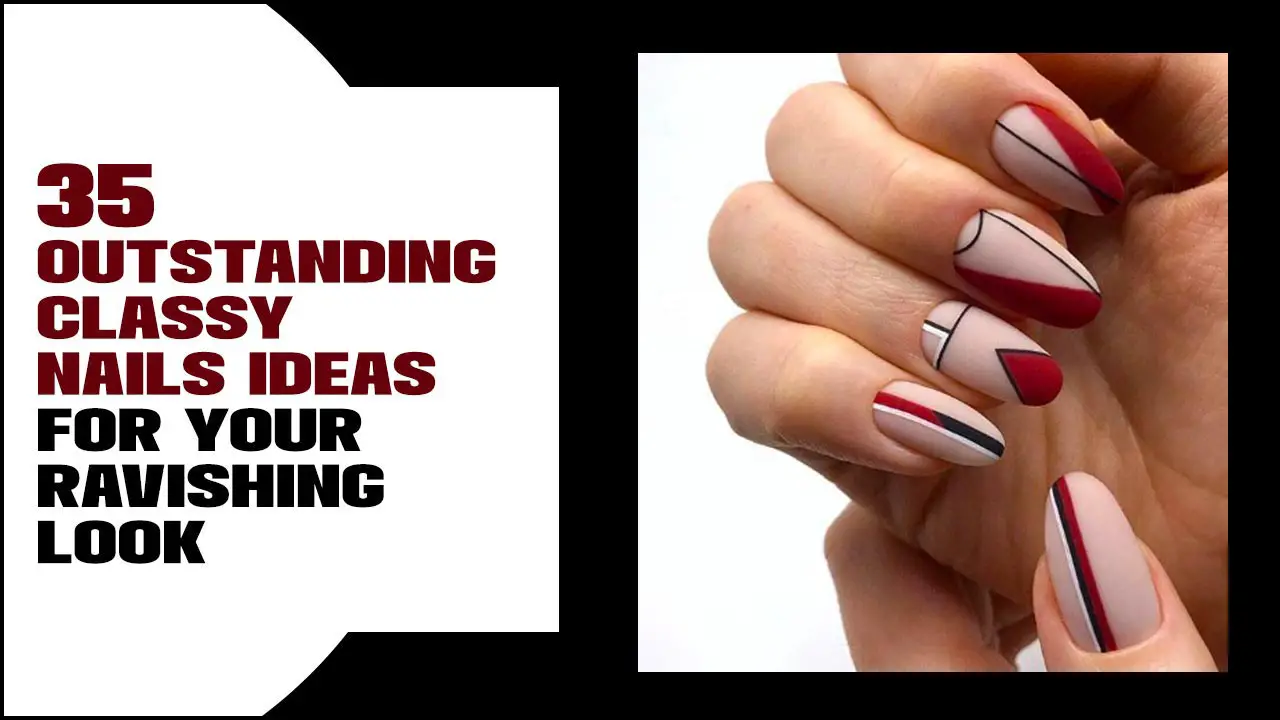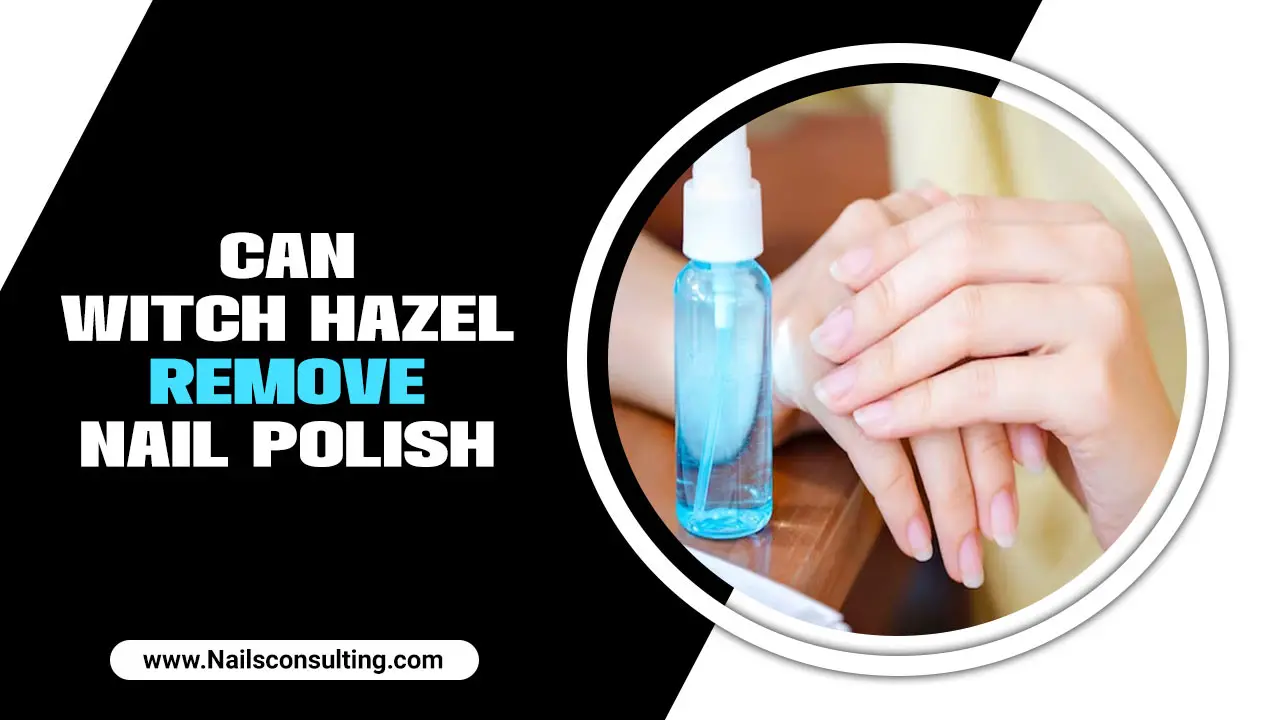Nail polish has been a staple in the beauty industry for decades, providing individuals with a way to express their personal style and enhance their overall appearance. From vibrant colors to intricate designs, nail polish has become a popular form of self-expression for people of all ages and genders.
However, with the rise of allergies and sensitivities to various ingredients in beauty products, many consumers have become increasingly concerned about the contents of their beloved nail polish. One ingredient that has gained particular attention is latex.
As a common allergen, individuals may wonder if the nail polish they are using contains this substance. Here we will delve into the world of nail polish and explore the question, “Does nail polish have latex in it?”.So without further ado, let’s dive into the details.
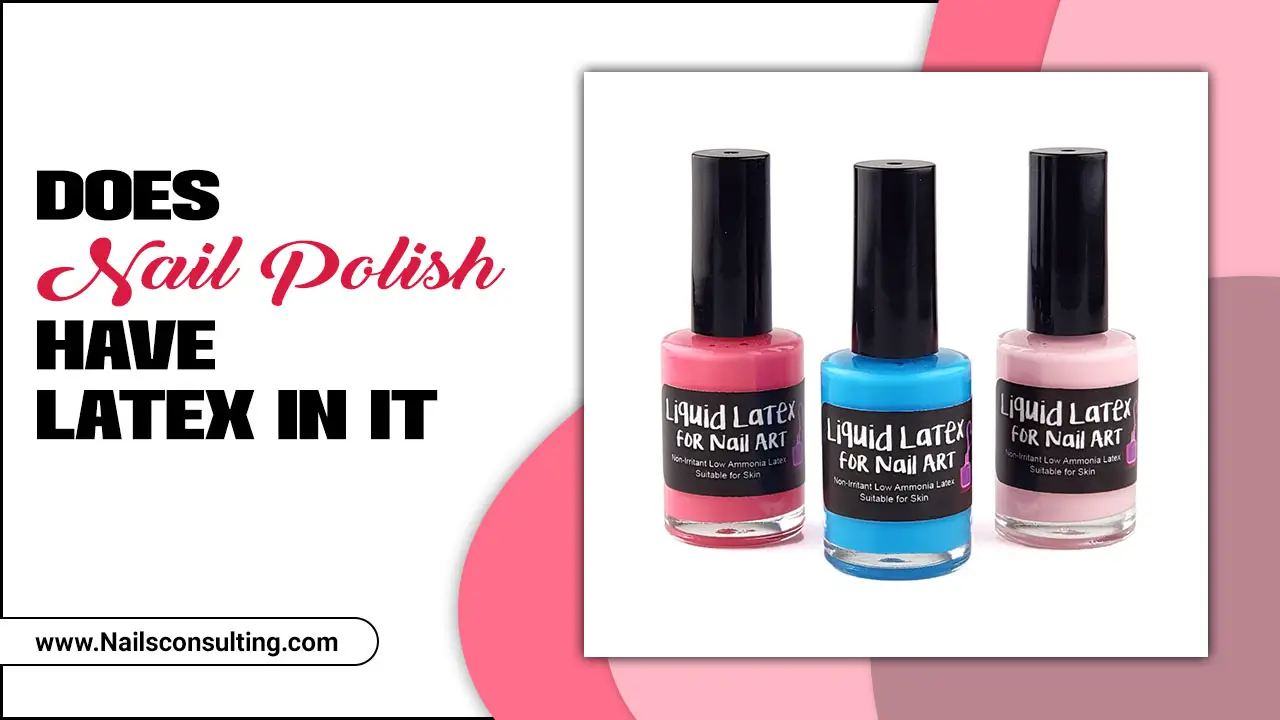
Does Nail Polish Have Latex In It – Know The Truth
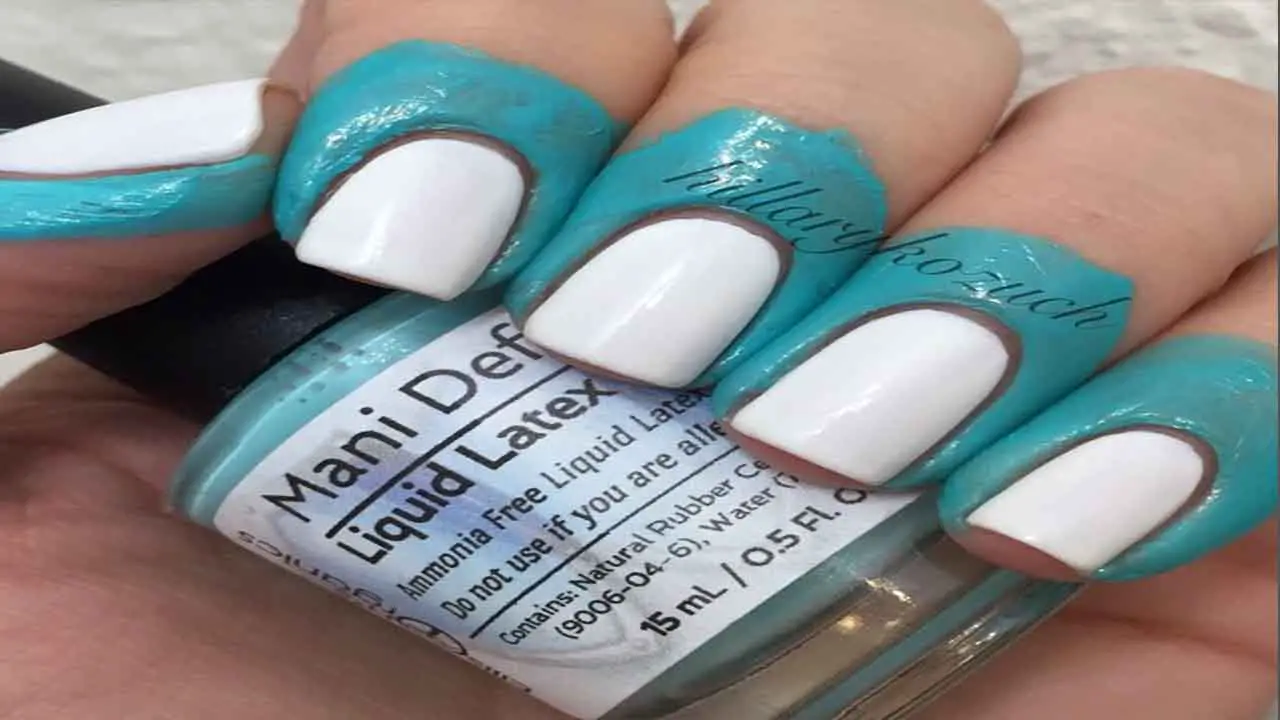
Nail polish typically does not contain latex. Latex is a natural rubber that is often found in products such as gloves, condoms, and certain types of adhesives. Nail polish is primarily made up of solvents, pigments, and resins that help create its glossy finish.
However, it’s important to note that some nail products, such as nail glue or certain nail treatments, may contain latex. If you have a latex allergy, it’s always best to check the ingredient list or consult with a medical professional before using any nail products. Below we discuss more in detail on does nail polish have latex in it.
Understanding The Ingredients In Nail Polish
Nail polish typically does not contain latex as an ingredient. The main components of nail polish include solvents, film formers, pigments, and plasticizers. These ingredients are responsible for creating the glossy and durable finish of nail polish.
However, it is important to note that some individuals may have allergic reactions to certain ingredients in nail polish, such as formaldehyde resin or tosylamide/formaldehyde resin, which can cause skin irritation or allergic contact dermatitis.
If you have a latex allergy or any other sensitivities, it is always recommended to carefully read the ingredient list on nail polish products and choose those that are labeled as latex-free or hypoallergenic.
Common Allergens In Nail Polish

Nail polish can be a fun way to express your personal style, but it’s important to be aware of the ingredients it contains, especially if you have allergies or sensitivities. While nail polish does not commonly contain latex, you should watch out for other common allergens. Here are some common allergens that may be present in nail polish:
- Formaldehyde: This chemical is handy as a preservative in some nail polish formulas and can cause skin irritation and allergic reactions.
- Toluene: Found in many nail polishes, toluene is a solvent that can irritate the eyes, throat, and lungs.
- Dibutyl Phthalate (DBP): Used as a plasticizer, DBP has been linked to reproductive issues and is often found in older formulations of nail polish.
- Camphor: This ingredient can cause skin irritation and allergic reactions in some individuals.
To avoid any potential allergic reactions or sensitivities, it’s always a good idea to check the ingredient list before purchasing a new nail polish. If you have known allergies or sensitivities, consider opting for nail polishes that are labeled as hypoallergenic or free from these common allergens.
The Potential Risks Of Using Latex-Containing Nail Polish
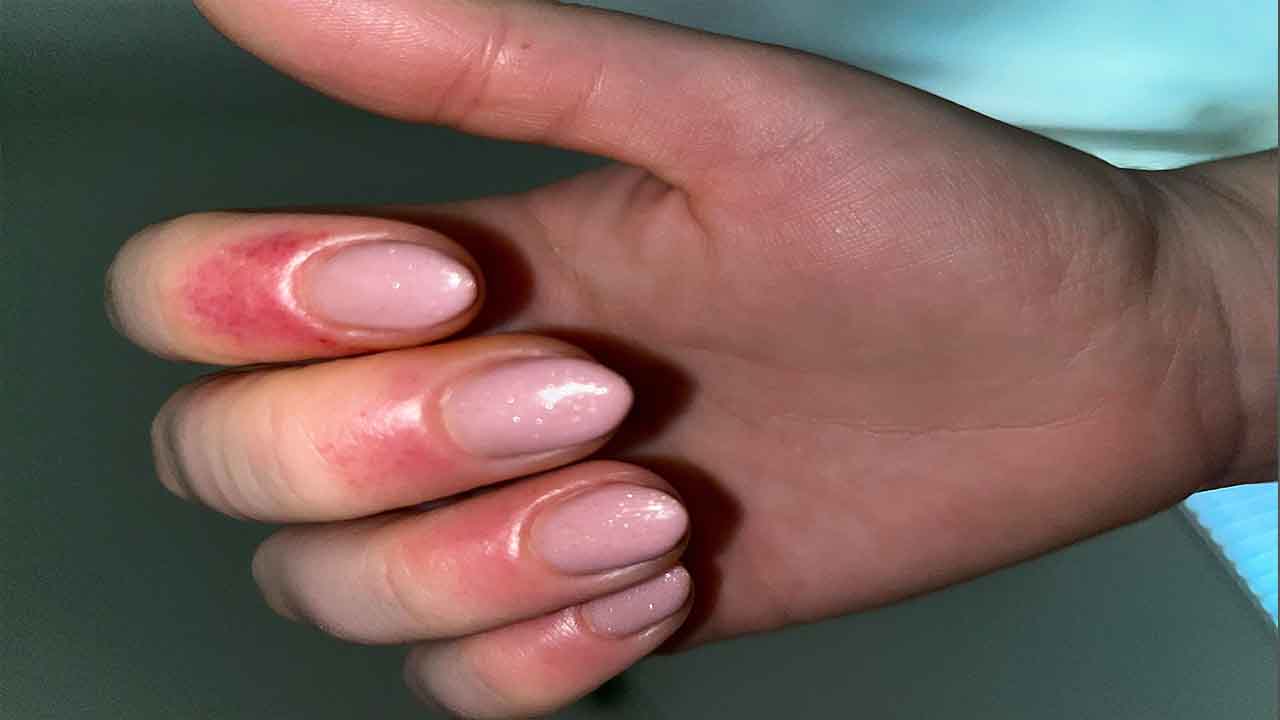
Using nail polish that contains latex can pose potential risks for individuals with latex allergies. Latex is a common allergen and can cause allergic reactions ranging from mild to severe. When individuals with latex allergies come into contact with latex-containing nail polish, they may experience symptoms such as itching, redness, swelling, or even difficulty breathing.
It is important for individuals with latex allergies to carefully read the ingredient labels of nail polishes and opt for latex-free alternatives. Additionally, if you suspect that you have a latex allergy, it is recommended to consult with a healthcare professional for proper diagnosis and guidance on managing your allergy.
Alternatives For Individuals With Latex Allergies
If you have a latex allergy, it’s important to be aware of the potential presence of latex in nail polish. Latex can sometimes be found in the form of natural rubber latex or synthetic latex in certain nail polishes.
This can cause allergic reactions such as itching, redness, swelling, and even hives. However, there are alternatives available for individuals with latex allergies. Here are some options to consider:
- Look For Latex-Free Nail Polishes: Some brands specifically manufacture latex-free nail polishes that are safe for individuals with latex allergies.
- Opt For Water-Based Nail Polishes: Water-based nail polishes are usually free from latex and other common allergens.
- Choose Hypoallergenic Formulas: Hypoallergenic nail polishes are specially designed to minimize the risk of allergic reactions and may be suitable for individuals with latex allergies.
- Test Products Before Use: If you’re unsure about a particular nail polish, perform a patch test on a small area of skin to see if any adverse reactions occur.
It’s always best to consult with a dermatologist or allergist if you have concerns about using nail polish with a latex allergy.
How To Identify Latex-Free Nail Polish Products
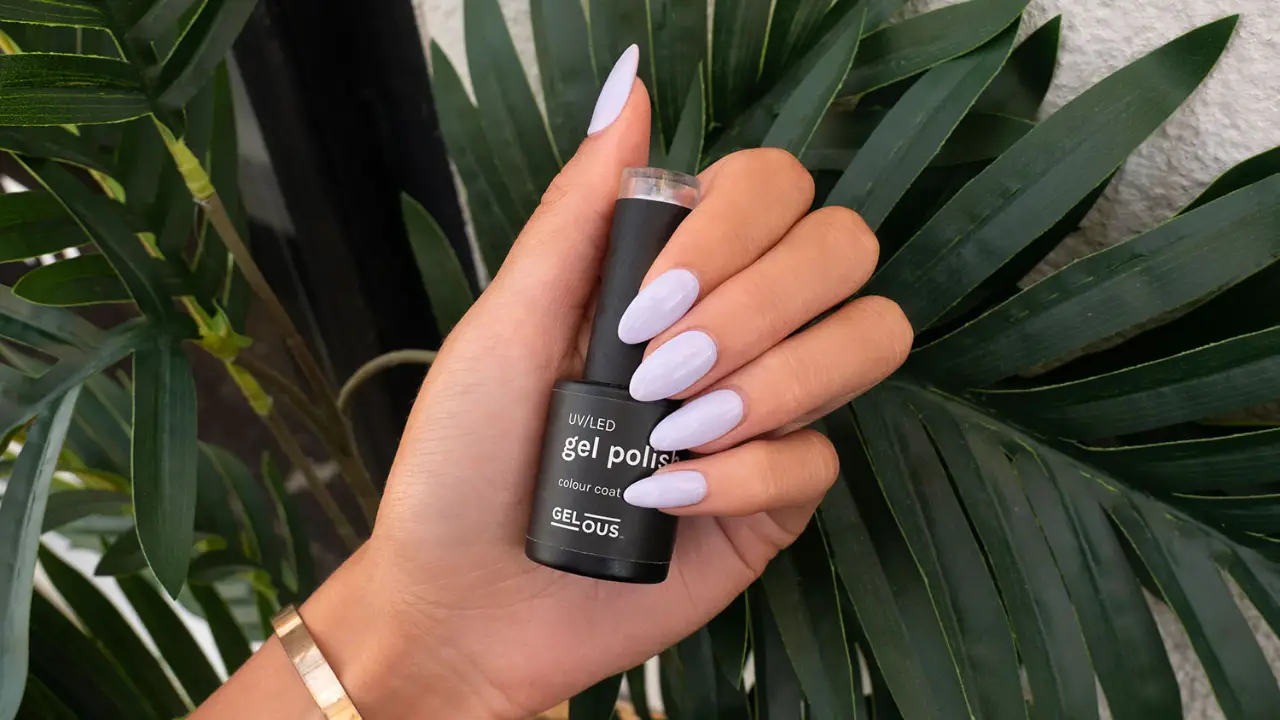
If you have a latex allergy, it is important to be aware of the ingredients in your nail polish products to ensure they are latex-free. Here are some tips to help you identify latex-free nail polish. By following these tips, you can ensure that your nail polish products are free from latex and safe for use if you have a latex allergy.
- Check The Ingredient List: Look for keywords like “latex” or “rubber” in the ingredient list. If these ingredients are not listed, the nail polish is likely latex-free.
- Look For Alternative Materials: Some nail polishes may use alternative materials, such as resins or polymers, instead of latex. Look for these ingredients as a sign that the product is latex-free.
- Research Brands: Certain brands may specialize in latex-free and allergy-friendly products. Do some research online or ask for recommendations from others with latex allergies to find brands that offer latex-free nail polish options.
- Patch Test: If you are unsure whether a specific nail polish is latex-free, you can do a patch test on a small area of your skin before applying it to your nails. This can help determine if you have any adverse reactions to the product.
Tips For Choosing Safe And Hypoallergenic Nail Polishes
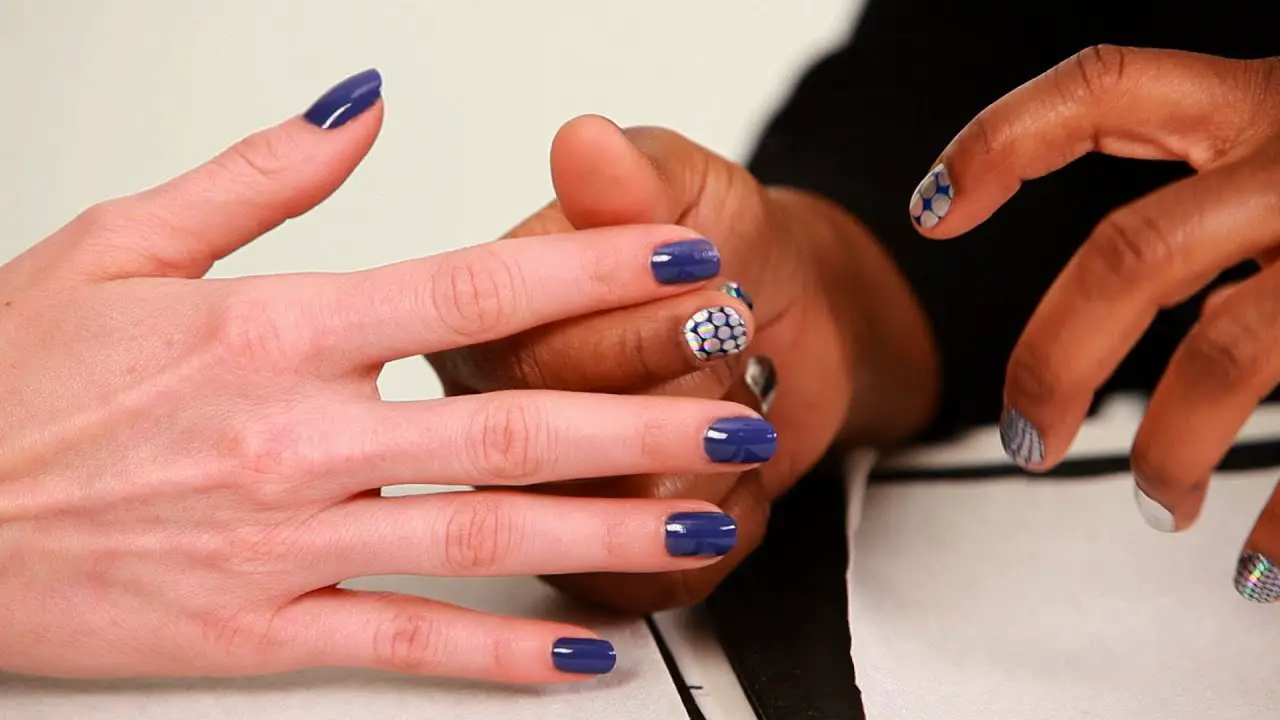
When it comes to choosing safe and hypoallergenic nail polishes, there are a few tips to keep in mind. Here are some key considerations. By following these tips, you can choose nail polishes that are safer and less likely to cause allergic reactions or skin irritations.
- Look For “5-Free” Or “7-Free” Formulas: These nail polishes are free from common harmful chemicals such as formaldehyde, toluene, and dibutyl phthalate. Opting for these formulas can help reduce the risk of allergic reactions.
- Check For Latex-Free Labels: Some individuals may have latex allergies and should avoid nail polishes that contain this ingredient. Look for products specifically labeled as latex-free to ensure safety.
- Read Ingredient Lists Carefully: Take the time to read the ingredient list on the nail polish bottle. Avoid products that contain known allergens or irritants that you may be sensitive to.
- Patch Test New Products: Before applying a new nail polish all over your nails, it’s a good idea to do a patch test on a small area of skin first. This can help you identify any potential allergic reactions before applying the product to your entire nail.
Nail Care Tips For Individuals With Latex Sensitivities
If you have a latex sensitivity, it’s important to be cautious when it comes to nail care products. Some nail polishes may contain latex, which can cause allergic reactions in individuals with sensitivities. Here are some tips to help you navigate nail care if you have a latex sensitivity:
- Read The Ingredient Labels: Before purchasing any nail polish or nail care products. Carefully read the ingredient labels to check for latex or any other potential allergens.
- Look For Latex-Free Options: Many brands now offer latex-free nail polishes and nail care products. Look for products that specifically state they are latex-free or hypoallergenic.
- Test For Reactions: If you’re unsure whether a certain product contains latex. Perform a patch test on a small area of the skin before applying it to your nails. This can help you determine if you’ll have an adverse reaction.
- Consider Alternative Options: If you find that most nail polishes on the market contain latex. Consider exploring alternative options such as water-based or natural nail polishes.
By being mindful of your latex sensitivity and taking these precautions, you can still enjoy beautiful nails without risking an allergic reaction.
Importance Of Reading Product Labels And Conducting Patch Tests
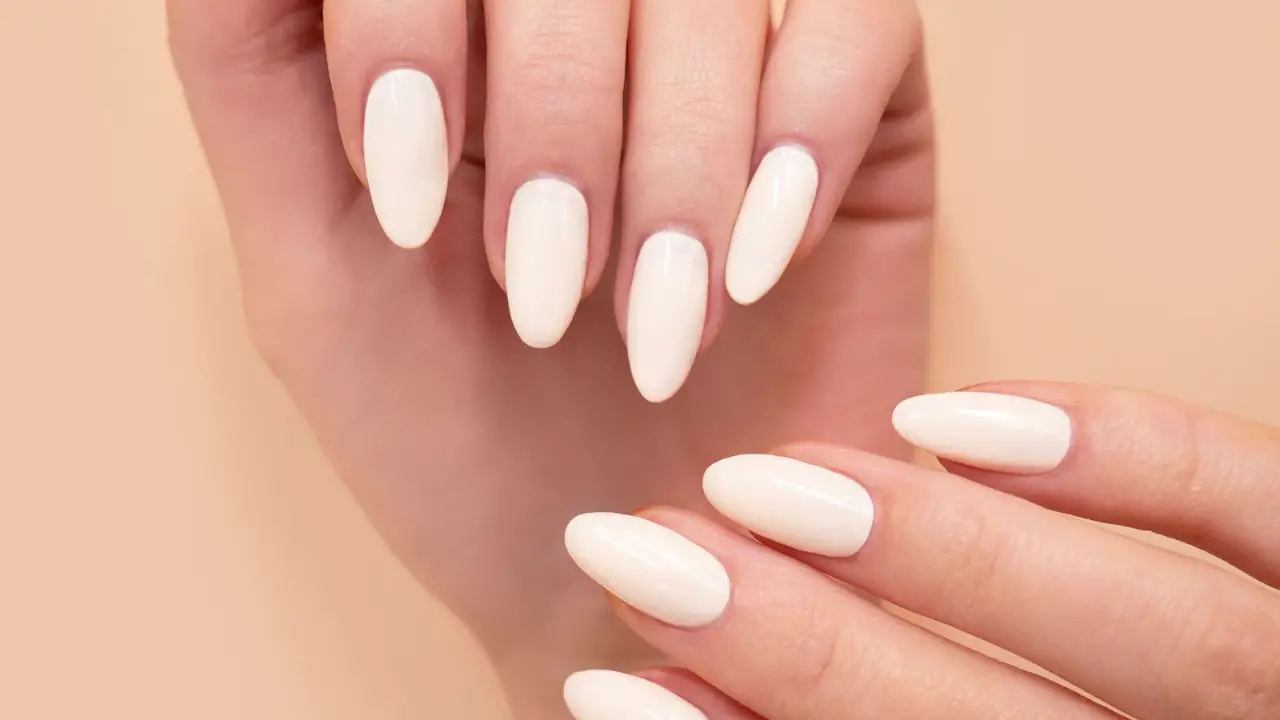
When it comes to nail polish, it is important to read product labels and conduct patch tests. Especially if you have a latex allergy. While not all nail polishes contain latex, some do use latex-based ingredients in their formulas. By reading product labels, you can check for any potential allergens or irritants that may be present. Additionally, conducting a patch test can help you determine.
If a particular nail polish will cause any adverse reactions on your skin. Simply apply a small amount of the polish to a small area of your skin and monitor for any signs of irritation or allergic reactions. Taking these precautions can help ensure that your experience with nail polish is both enjoyable and safe.
Conclusion
it is important to be aware of the ingredients in your nail polish and understand the impact they may have on your nails. Latex is commonly used in nail polish formulations for its positive effects on nail durability and adhesion. However, it can also pose potential risks, especially for individuals with latex allergies.
If you are sensitive to latex or prefer to avoid it, there are alternatives available in the market. Look for latex-free nail polishes that prioritize nail health and safety. Always read the ingredient list carefully before purchasing nail polish products. By making informed choices, you can enjoy beautiful nails without compromising your health. Hope now you know does nail polish have latex in it or not.
Frequently Asked Questions
1.What Is The Ingredient Latex?
Ans: People derive latex, a natural rubber, from the sap of rubber trees or produce it artificially through chemical processes. Products like gloves, balloons, and condoms commonly contain it. However, some individuals may have an allergic reaction to latex.
2.What Foods To Avoid With Latex Allergy?
Ans: If you have a latex allergy, it’s important to be aware of certain foods that may trigger allergic reactions. Some foods to avoid with a latex allergy include bananas, kiwis, avocados, chestnuts, and papayas.
3.What Makeup Contains Latex?
Ans: Some makeup products, like mascara and certain types of foundation, may contain latex. It’s crucial to read product labels and ingredient lists carefully to identify any presence of latex. If you have a latex allergy or sensitivity, there are latex-free makeup options available.
4.Do Crayons Contain Latex?
Ans: No, crayons do not contain latex. Crayons come from a mixture of pigments, wax, and other additives, but latex is not one of the ingredients handy in their production.
5.What Is Liquid Latex Nail Polish Used For?
Ans: Liquid latex nail polish serves multiple purposes in nail care and art. It acts as a protective barrier around the nails during manicures and nail art while also enabling the creation of negative space designs or serving as a base for glitter or chrome powders. Additionally, its quick-drying formula and availability in different colors make it a favorite among nail artists for creating unique designs.

